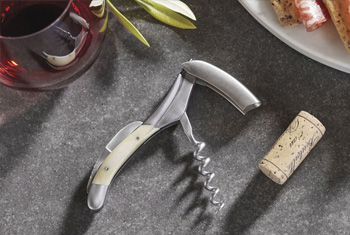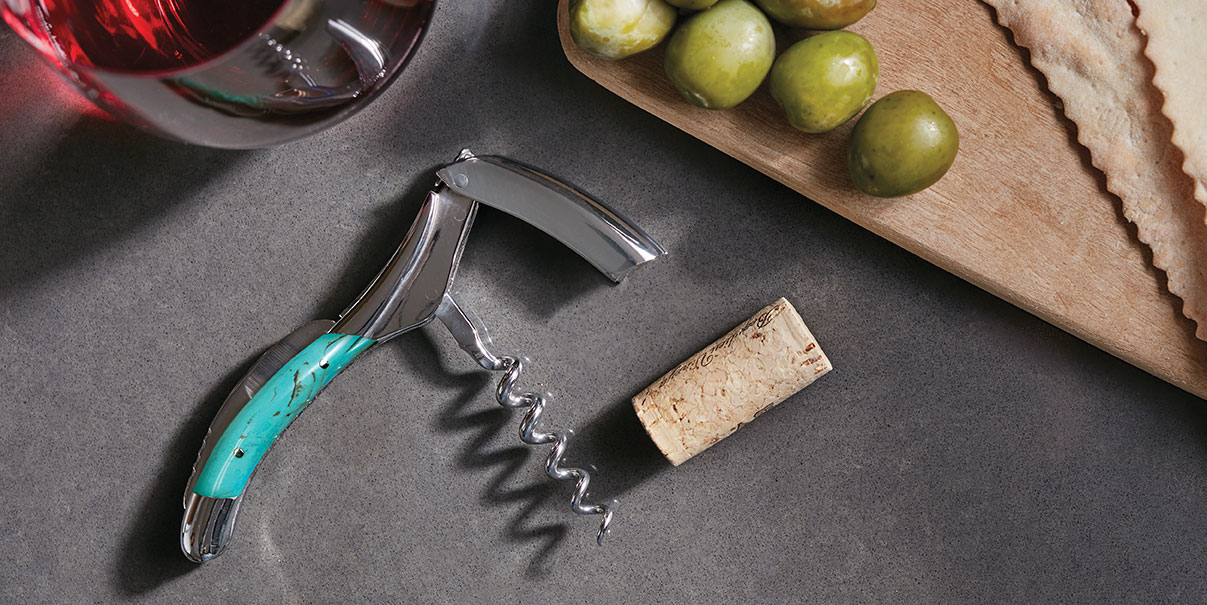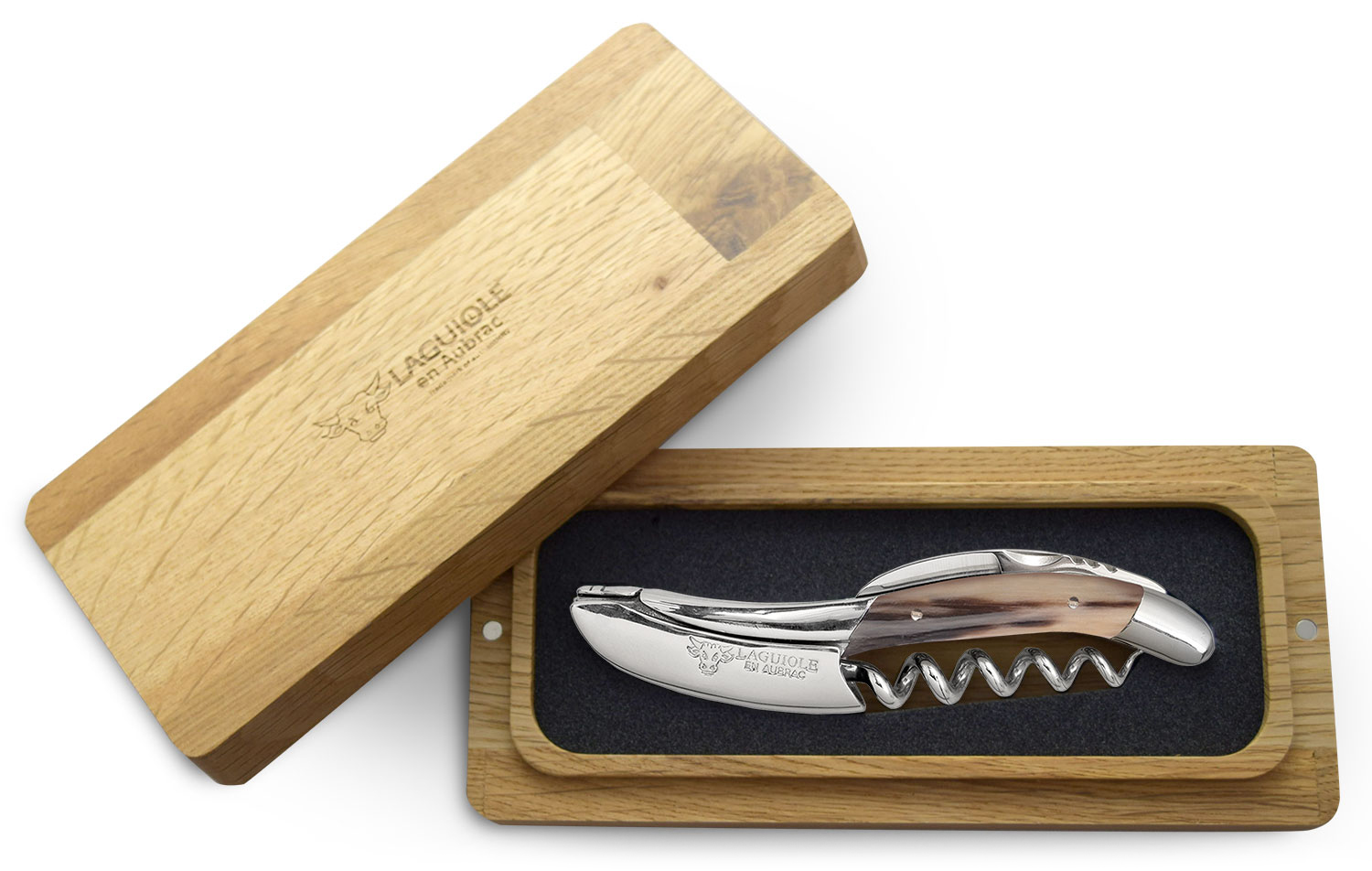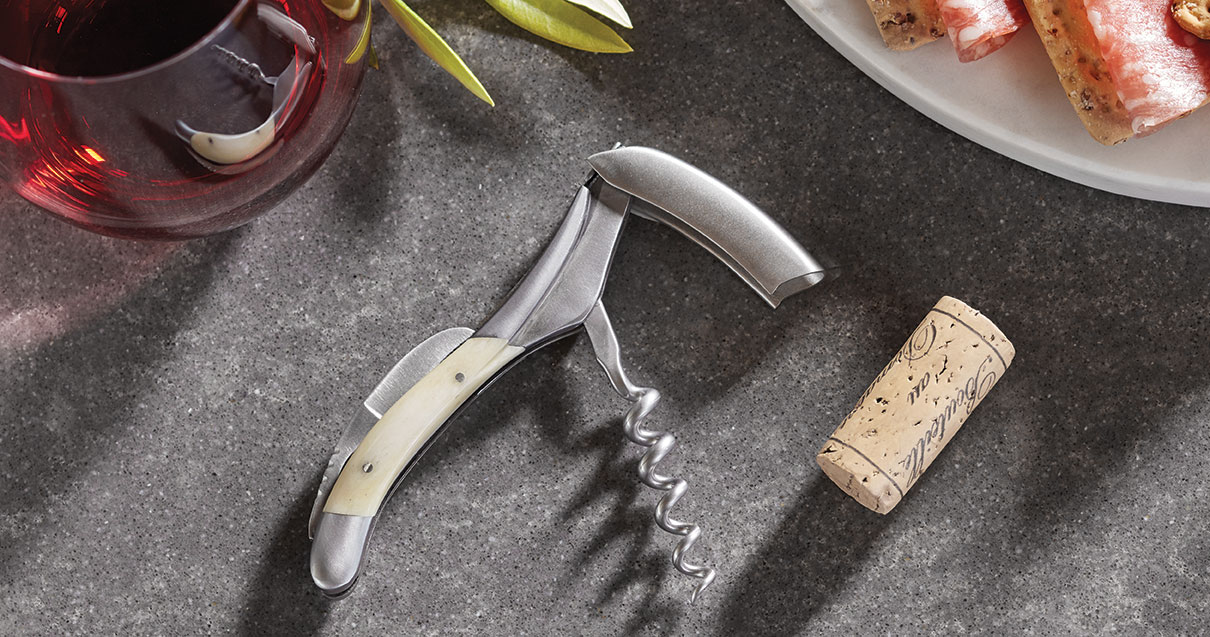
What was once a simple knife used by French farmers is now one of the most sought-after corkscrews in the world, preferred by professional sommeliers.
The name Laguiole (pronounced lah-yole), comes from a village in the middle of the Aveyron region of France, where the original knives were first made in 1829 by Jean-Pierre Calmels. The handy and versatile tool was the go-to knife for many farmers. Originally used to cut bread and wood, a poinçon, or piercer, it was incorporated later so farmers could make holes in harnesses or pierce the stomachs of bloated animals suffering from colic.
As needs changed, so did the knife. In 1880, as poor farmers emigrated to nearby Paris to open restaurants and bars, a corkscrew was added.

The signature bee
One trademark of a true Laguiole knife is an insect forged on the spring. Many believe it represents the flies or horseflies commonly seen in the Aveyron region because of the cattle bred there. The catch on a Laguiole knife is often referred to as la mouche or the fly.
Locals prefer another, more glamorous story, suggesting that the insect is a bee—an imperial symbol bestowed by Napoleon himself to the town of Laguiole in thanks for the bravery of its soldiers.
Beware of cheap imitations
Since the icon and the name were never trademarked, a bee on the spring or bolster doesn’t guarantee the authenticity of the corkscrew. Ask for a certificate of authenticity and if the seller claims it has been lost, try to do as much research as possible to ensure you aren’t purchasing an imitation. Look for “Made in France,” not “Imported from France.” In this case, imported means the components were made elsewhere and brought to France for final assembly.
The Laguiole name and signature bee cause a lot of confusion. Laguiole is not a single company that produces these knives and corkscrews — it is just a generic name for a folding pocket knife.
Many inexpensive, low-quality knock-offs have flooded the market. Many of these low quality, machine-made knives and corkscrews are made in China or Pakistan. Even French manufacturers produce varying levels of quality, from inexpensive, mostly machine-made items to high-end, fully hand-made and engraved products (with a high price tag to match). Look for products that are “Laguiole en Aubrac” for the finest quality.

Laguiole catches on
Over the years, demand grew, production increased, and the manufacturers expanded their operation 100 miles northwest to the town of Thiers. By 1981, all of these famous knives were produced in Thiers. In 1988, the town of Laguiole built two forges to once again produce its namesake products, but most authentic Laguiole products are still produced there.
While the design of the Laguiole knife is more than 170 years old, the design of the coveted modern Laguiole corkscrews is recent. Today the Laguiole name and signature bee adorns folding knives, corkscrews, table cutlery and cigar cutters. To experience the craftsmanship that goes into hand-assembling a Forge de Laguiole corkscrew, watch the video below. The Laguioles we sell are more affordably priced, but we still found the process interesting. One of the most popular is our Laguiole corkscrew with Zebu horn handle.

Your own piece of French history
The Laguiole En Aubrac corkscrews we offer strike a nice balance between quality and affordability. These genuine corkscrews are made in France by master craftsmen.
They’re hand forged and crafted with extra-long, five-turn stainless steel grooved spirals and serrated blade foil cutters, and packaged in a wood gift box. Each comes with a certificate of authenticity and a lifetime warranty. Our Laguiole products are beautiful, functional and durable. Not only should you get one for yourself, they make excellent gifts for the wine aficionados in your life, too.
I appreciate you explaining where the laguiole came from as well as what makes it unique. I think it’s important that we have the right tools, including a knife or corkscrew, to aid us in certain tasks. There’s a knife out there for just about anything, it seems!
– Bernard Clyde
Hi, I have a Laguiole en Aubrac corkscrew. Bit concerned the foil cutter is only serrated on one side and the other side is smooth and not sharp. Makes it difficult to easily cut the foil. Is this normal?
– Gary Simpson
Hi Gary,
Yes, the Laguiole en Aubrac foil cutter is serrated on one side. Hold the corkscrew steady, bracing your hand against the smooth side of the foil cutter, and move the bottle itself in a circle, which runs the serrated blade around the edge.
Thanks for your reply. Yes, since then I have had a similar response from the factory in France. I shall still be getting the smooth side of the cutter professionally sharpened. This will also not affect the lifetime warranty.
– Gary Simpson
Both Bernard and Gary are classic gentlemen who well understand that the corkscrew and knife, functional as they be, express their genuine care for the pleasure of their dining guests. Over your respective lifetimes, you will accrue a wonderful collection of them with a story behind each one, which is great for dining conversations.
– Harry Francis Kuhn III
HI there, I picked up a Laguiole today, solid stainless with a sheath with japanese characters embossed on it, but it doesn’t have ‘made in france’ embossed on the blade. It weighs exactly 113g, blade ias exactly 4.06cm long. Just wondering if they manufacture outside of France as well as the handmade ones?
– Greg Haigh
Hi Greg, the Laguiole En Aubrac corkscrews that we sell come directly from France, but we are happy to look at the corkscrew that you came across. Since the blog does not have a way to upload photos of it, feel free to contact us on Facebook or Instagram with photos of the concern!
https://www.facebook.com/IWAwine
https://www.instagram.com/iwawine